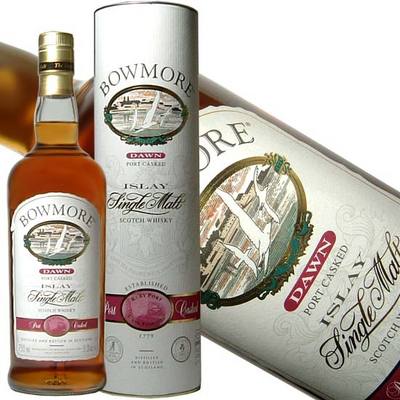|
|
Release Notes
Dawn is Bowmore finished in Ruby Port casks, and tasting of "Grapes, plums, fig-rolls and blackcurrant" according to the distillers. Discontinued in January 2007.
Royal Mile Whiskies
3rd Party Tasting Notes
Nose: Soft, gentle, sooty smokiness.
Palate: Textured, lightly toffeeish. Fruity. Interplay of brown-sugar sweetness and tar-like dryness.
Finish: Peaty, leafy, reedy. A certain sandy grittiness.
Comment: Wood finishes are still fun and may recruit new enthusiasts for malt. Dawn, Dusk, Voyager...this is becoming confusing. Of those three (Port, Bordeaux and Port again), Dawn seems the lightest all-round.
Rating: 8.25/10
Palate: Textured, lightly toffeeish. Fruity. Interplay of brown-sugar sweetness and tar-like dryness.
Finish: Peaty, leafy, reedy. A certain sandy grittiness.
Comment: Wood finishes are still fun and may recruit new enthusiasts for malt. Dawn, Dusk, Voyager...this is becoming confusing. Of those three (Port, Bordeaux and Port again), Dawn seems the lightest all-round.
Rating: 8.25/10
Michael Jackson, Whisky Magazine #19
Nose: Perfumed and winey: lavender, peat smoke, red fruits, strawberry jam, rhubarb and custard sweeties. Water intensifies the perfume: sage, peat smoke, orange, drying seaweed, heather.
Palate: Mulled wine beside a peat fire. Hessian, clove, sour cherry.
Finish: A little hot. Sweet. Smoky.
Comment: Like sucking a wine gum in a kiln. A little too winey for me.
Rating: 8.25/10
Palate: Mulled wine beside a peat fire. Hessian, clove, sour cherry.
Finish: A little hot. Sweet. Smoky.
Comment: Like sucking a wine gum in a kiln. A little too winey for me.
Rating: 8.25/10
Dave Broom, Whisky Magazine #19
The Distillery: Bowmore
| Established: 1779 |
| Silent since: False |
| Address: School Street, Bowmore, Islay, Argyllshire PA43 7JS, United Kingdom |
| → website |
2000 - Bowmore joined the growing group of distilleries that offered "finished" expressions of their whisky. They released the bordeaux finished "Dusk" in 2000 and the port finished "Dawn" in 2001. These expressions were removed from Bowmore"s portfolio, but later new bordeaux and port finishes were released.
The Bowmore distillery on Islay was built in 1779, at least that"s the claim made by their marketeers. The records from this early period are often vague, so when the first Bowmore was actually distilled is hard to determine with 100% accuracy.
Bowmore still has its own maltings, although the three malt floors only produce about a third of all the malted barley that Bowmore needs. The rest is produced at the Port Ellen maltings. The malt is broken before it is dried over a very smoky fire, which may account for the fact that modern day Bowmores tend to be predominantly smoky as opposed to the peatier style of, for example, the three Southern "Lochindaal" distilleries Ardbeg, Lagavulin and Laphroaig . Some Bowmores released in the 1960"s and before have a much lighter, more "floral" style.
Bowmore was also one of the first distilleries that knew how to "hype" its whiskies with breathless and soulless press releases about yet another "most expensive whisky ever sold". During the early noughties they were involved in a constant tug of war with distilleries like Dalmore and Macallan about who had the dubious honour of calling themselves "the most expensive whisky ever".
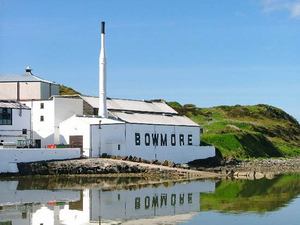
Together with Glenfiddich, Glenfarclas and Macallan, Bowmore was one of the first distilleries that managed to put a broad and consistant range of bottlings with different age statements on the shelves of liquorists. Apart from a number of expressions without an age statement (Legend, Surf, Cask Strength, Darkest, Dusk, Dawn, etc.) Bowmore"s core range consists of a 12yo, a 15yo, a 17yo, a 21yo, a 25yo and a 30yo whisky. In the 1990"s a 10yo expression was available in Holland as well, but as far as I know the Bowmore 10 was discontinued a few years ago. Bowmore has a style of its own which has many enthusiastic fans.
A relatively large part of the whisky produced at Bowmore is bottled as a single malt, either as official bottlings in the range I described above or as independent bottlings. The rest of the malt whisky produced at Bowmore is an ingredient of blends like Rob Roy and Black Bottle.
Owners during the 19th century included one John Simpson and William & James Mutter. In 1922 the distillery came up for sale and it took three years before it was acquired by a company that went by the name of Sherriff"s Bowmore Distillery Ltd.
In 1950 Bowmore was purchased by William Grigor & Sons Ltd. from Inverness. A little over a decade later, in 1963, Stanley P. Morrison Ltd. bought Bowmore, increased the number of stills to four and added a visitor centre - proving that they had a nose for marketing even when the single malt market was still relatively small in the 1960"s. The marketing of Bowmore became even more sophisticated after Suntory from Japan bought Bowmore"s parent company in 1994. Apart from Bowmore, Suntory currently owns the Lowlands distillery Auchentoshan and Glen Garioch in the Eastern Highlands.
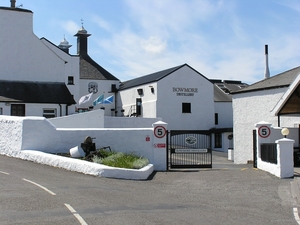
So, it"s a weird reverse price war - and some distilleries are leapfrogging all the way to the bank. Fortunately for the whisky industry, there is a large audience (especially in Asia and the Americas) that is actually more interested in expensive whisky than in good whisky. If you are a successful distiller, it eventually becomes very difficult to make an even better whisky - even with the investment of a lot of capital, time and energy. Making an even more expensive whisky is relatively easy in comparison, especially if you"re the one making the price tags. But I guess it just makes common business sense to cater to that "platinum" target audience as well. As long as the distilleries still keep making good, affordable malts for the masses, I shouldn"t complain...
In the new Millenium
2009 - In the second half of the 1990"s Bowmore started to suffer from an overly perfumy character in their bottlings which became known as "FWP". Many malt whisky lovers were not fond of this characteristic and consequentially many of them started to avoid the brand altogether. Fortunately, the problem seems to have "worked itself through the system" now - although single cask bottlings from the 1980"s (OB"s and IB"s) can still be tainted by FWP.
Trivia:
- Some Bowmore bottlings share an unpleasant trait that is known as "FWP". This is short for "French Whore Perfume". It"s quite unmistakable and most people with more refined palates find it absolutely revolting - but that didn"t stop Bowmore from releasing those bottles anyway.
- Stanley P. Morrisson bought the Bowmore distillery for 117,000 GBP in 1963.
from Malt Maniacs
The Owner: Morrison Bowmore Distillers
| Established: 1951 |
| Silent since: False |
| Address: Springburn Bond, Carlisle Street, Glasgow G21 1EQ, United Kingdom |
| → website |
With three Malt Whisky Distilleries situated in the major production areas of Islay, the Highlands and the Lowlands and significant blending, bottling and warehousing facilities, the company has established a leading role in the export of Bulk blend, Vatted Malt and in particular `Bottled in Scotland" Blends and Single Malts.
Morrison Bowmore Distillers acquired Bowmore in 1963, Glen Garioch in the early 70s and Auchentoshan in the 80s. Suntory acquired Morrison Bowmore Distillers and its distilleries in 1994.
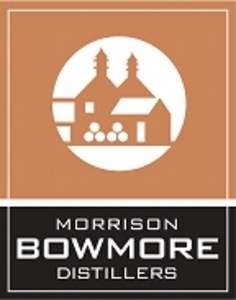
Founded in 1951 by Mr Stanley P Morrison and Mr J Howat, Morrison Bowmore Distillers Limited is now a wholly owned subsidiary of Suntory Limited and is one of the major names in Scotch whisky.
from Morrison Bowmore Distillers, Malt Maniacs
The Owner: Suntory
| Established: 1899 |
| Silent since: False |
| Address: Daiba 2-3-3, Minato-ku, Tokyo, 135-8631, Japan |
| → website |
In 2003, Suntory acquired a 98.5% equity holding in Florigene. Prior to this, Florigene had been a subsidiary of global agrochemicals giant Nufarm Limited since 1999. In July 2004, Suntory and Florigene scientists announced to the world the development of the first roses containing blue pigment, an important step toward the creation of a truly blue colored rose.
On April 1, 2009, Suntory became a stockholding company named "Suntory Holdings Limited and established "Suntory Beverage and Food Limited", "Suntory Products Limited", "Suntory Wellness Limited ", "Suntory Liquors Limited", "Suntory Beer & Spirits Limited", "Suntory Wine International Limited", and "Suntory Business Expert Limited".
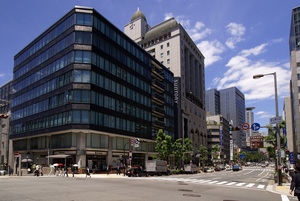
From the early 1990s, Suntory has collaborated extensively with Melbourne biotechnology firm Florigene to genetically engineer the world"s first true blue rose, a symbol often associated with the impossible or unattainable. In 1991, the team won the intense global race to isolate the gene responsible for blue flowers, and has since developed a range of genetically modified flowers expressing colors in the blue spectrum, as well as a number of other breakthroughs extending the vase life of cut flowers.
Suntory was started by Torii Shinjiro, who first opened his store Torii Shoten in Osaka on February 1, 1899, to sell imported wines. In 1907, the store began selling a sweet tasting red wine called Akadama Port Wine. The store became the Kotobukiya company in 1921 to further expand its business. In December 1924, Yamazaki Distillery, the first Japanese whisky distillery, began its production of malt whisky. Five years later Suntory Whisky Sirofuda (White Label), the first single malt whisky made in Japan, was sold.

Due to wartime shortage of World War II, Kotobukiya was briefly forced to halt its development of new products. In 1961, Kotobukiya launched the famous "Drink Tory"s (Whisky) and Go to Hawaii" campaign. At the time, a trip abroad was considered a once-in-a-lifetime opportunity. In 1963, Kotobukiya changed its name to "Suntory", taken from the name of the famous whisky it produces. In the same year, Musashino Beer Factory began its production of the Suntory Beer. In 1997, the company became Japan"s sole bottler, distributor, and licensee of Pepsi products.
Suntory is a Japanese brewing and distilling company group. Established in 1899, it is one of the oldest companies in the distribution of alcoholic beverages in Japan. Its business has expanded to other fields, and the company now offers everything from soft drinks to sandwich chains. Suntory is headquartered in Dojimahama Nichome, Kita-ku, Osaka, Osaka prefecture.
Trivia:
- On July 14, 2009, Kirin announced that it is negotiating with Suntory on a merger. On February 8, 2010, it was announced that negotations between the two were terminated.
- Suntory was one of the first Asian companies to specifically employ American celebrities to market their product. One of the most notable is Sammy Davis, Jr., who appeared in a series of memorable Suntory commercials in the early 1970s. In the late 1970s, Akira Kurosawa directed a famous series of commercials featuring American celebrities on the set of his film Kagemusha. One of these featured Francis Ford Coppola (an executive producer of the film), which later inspired his daughter Sofia Coppola in her writing of Lost in Translation, a film which focuses on an American actor filming a Suntory commercial in Tokyo.
- Suntory operates two museums, the Suntory Museum of Art in Tokyo and the Suntory Museum Tempozan in Osaka, in addition to a number of cultural and social programs across Japan.
- There is a top Japanese rugby club called the Suntory Sungoliath owned by the Suntory company.
from Wikipedia
